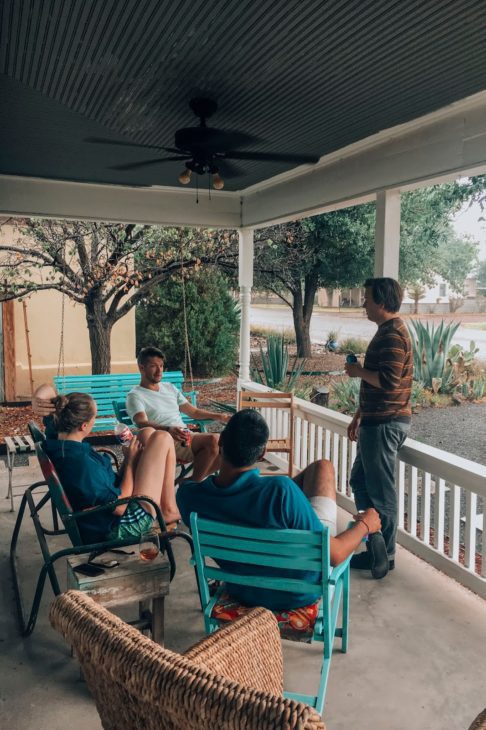When I told people I was going to Marfa, Texas, for my best friend’s wedding, the response I got ninety-nine percent of the time was, “Where is that?”
Well, friend, I will tell you: It’s somewhere in west Texas, with no airport nearby except for El Paso (which is still three hours due northwest) or Midland (also three hours, but due northeast). It’s kind of near Big Bend National Park, but that’s also still two-and-a-half hours away.
Short answer: “Middle-of-nowhere, Texas.”



I’ve since learned that the only people who have actually heard of Marfa are either, a) from Texas, b) dedicated art enthusiasts, or c) following a lot of travel accounts on Instagram. The drive east on I-10, and then Highway 90, from El Paso takes you past the ranch land of the high desert that somehow seems even more deserted than the wide open vistas of the lower elevation deserts of Arizona or Utah. I think it’s perhaps something about the color palette—the muted browns and taupes that roll by outside your window, as opposed to vibrant reds and oranges. Occasionally you’ll pass a foreboding gate marking the entrance of a supposed private tract of land, though you wonder why the announcement is necessary when there’s no other sign of human existence.
Marfa is a town you stumble upon during that drive—a sudden density of buildings that didn’t exist ten minutes prior. At first glance, it appears much like any other quiet American town; it has all the typical small-town features: courthouse, old movie theater, town-name banner stretching over the width of Main Street. In most of the similar small towns I’ve visited across this vast country, this postcard of Americana is mostly a facade; the buildings are empty at best, derelict in many cases. Marfa, though, is different.




Shops and galleries line Main Street. The old Palace Theater is used as an art studio. The historic Paisano Hotel and the more modern Saint George Hotel are architectural/design highlights, as well as just places to stay. Off Main Street, there are enclaves of style and aesthetic. The Lincoln is a smattering of quirky casitas, tucked into a commune-esque compound, blending a private and social accommodation style. There’s Planet Marfa, an outdoor oasis of food and drink under twinkle lights and trees. Do Your Thing Coffee offers caffeine and toast in a ramshackle building with a surprisingly put together interior. (I also heard a fabulous story about how they rebuked “influencers” pandering for free coffee in exchange for Instagram posts.) Marfa Burrito‘s got a no-nonsense menu of a regional delicacy; it’s not to be missed. And if you’re really hankering for that classic, gritty Texas vibe, Lost Horse Saloon won’t disappoint with its pool tables, outdoor patio, cheap drinks, and live music. Visiting this small town with many of our college friends—where we stayed just down the street from each other and could stop in and visit on our way to and fro—really highlighted the appeal of small-town living.
The 1956 film Giant, starring James Dean and Elizabeth Taylor, was filmed in Marfa, but its more recent reputation as a creative community has minimalist artist Donald Judd to thank. He moved to Marfa from NYC in 1971 and began transforming an old military fort into art galleries, now the Chinati Foundation, a contemporary art museum. Despite not actually visiting this myself (I was busy with friend-of-bride duties), I’d deem it a must-see simply because that moment in Marfa’s history has proven to be of long-lasting influence, shaping the Marfa we visit and experience today.



Marfa is a place about which I’m actually pretty curious. On the surface, it certainly has a lot of design appeal; in this modern age, much of it feels almost made for Instagram posts. It attracted an artistic community thirty or forty years ago, but who are Marfa’s residents now, and how long have they resided there? I’ve heard talk of residents being pushed out by rising taxes—properties purchased as rental units rather than residences. I don’t know the validity of that, but its popularity is growing as tourist destination for a younger, more urbane set. And if that’s the case…is it still authentically artistic, or simply well curated?
Further afield // Chihuahuan Desert Research Institute (26 mi); Prada Marfa (37 mi); Big Bend National Park (136 mi)





